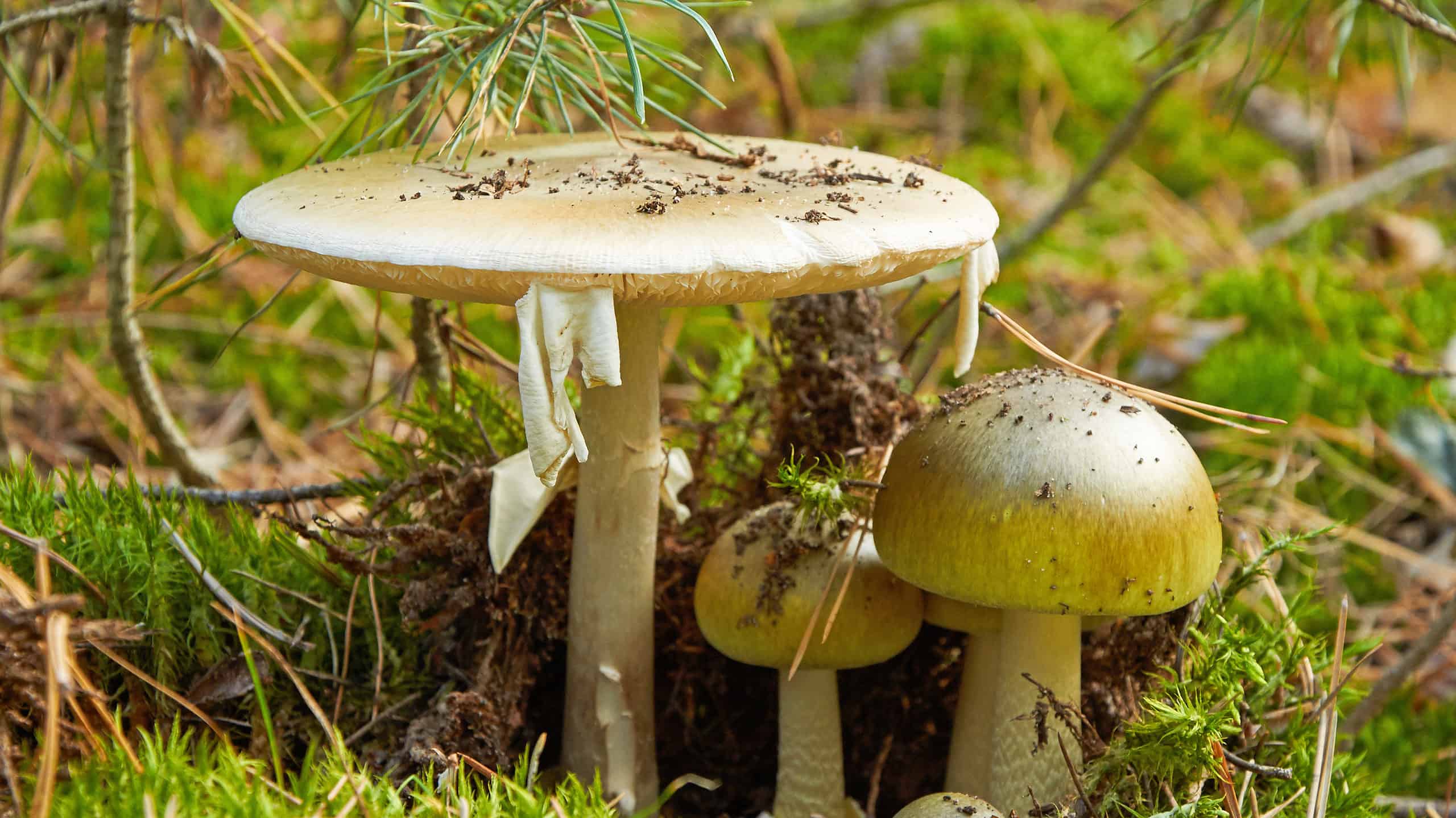The Death Cap mushroom (Amanita phalloides) is known as one of the most toxic and deadly fungi in the world. It is found in various regions, including the UK, where it grows in woodland areas, particularly near oak trees. This article aims to educate the public about the Death Cap mushroom in the UK, including identification, toxicity, and what to do if ingestion is suspected.
Identification of Death Cap Mushroom
- Cap: Olive-green to yellowish in color, smooth and dome-shaped.
- Gills: White, crowded, free from the stem.
- Stem: White, with a ring (annulus), and a bulbous base.
- Spore Print: White.
Habitat and Distribution in the UK
- Location: Often found in woodland and forest areas, particularly near oak trees.
- Season: Late summer to autumn.
- Regions: Scattered across the UK but more common in England and Wales.
Toxicity and Danger
- Deadly Poisonous: Contains potent toxins called amatoxins that attack the liver and kidneys.
- Symptoms: Initial symptoms may include severe abdominal pain, vomiting, and diarrhea, followed by a false recovery period, and then potential liver and kidney failure.
- Treatment: Immediate medical attention is essential. There is no home remedy for Death Cap poisoning.
- Fatality: Death can occur if not treated promptly. It’s responsible for the majority of mushroom poisoning deaths worldwide.
Prevention and Caution
- Foraging: Extreme caution must be exercised when foraging for wild mushrooms. Misidentification can lead to tragic consequences.
- Education: Learn from expert foragers and mycologists. Many organizations provide workshops and field trips.
- Avoidance: If in doubt, leave it out. It’s better to avoid picking wild mushrooms if you are not absolutely certain of their identity.
What to Do If Ingestion is Suspected
- Seek Immediate Medical Help: Call emergency services without delay.
- Preserve a Sample: If possible, keep a sample of the mushroom for identification.
- Provide Information: Give medical professionals all the information about the incident, including when and where the mushroom was consumed.
Conclusion
The Death Cap mushroom is a deadly fungus found in the UK that requires respect and caution. Education, proper identification, and avoidance are crucial to preventing tragic incidents. Whether you’re a seasoned forager or a casual nature enthusiast, understanding the risks associated with the Death Cap and other toxic mushrooms is paramount.
FAQ
Q: Can cooking or boiling the Death Cap make it safe to eat?
A: No, cooking or boiling does not neutralize the toxins.
Q: Are there any mushrooms that look similar to the Death Cap?
A: Yes, some other Amanita species may look similar, highlighting the importance of proper identification.
Khalid Irfan is a Fitness expert who enjoys spending time in gym. He also enjoys being in the outdoors and exploring new opportunities whenever they arise as well as researching new topics to expand his horizons.

Leave a Reply